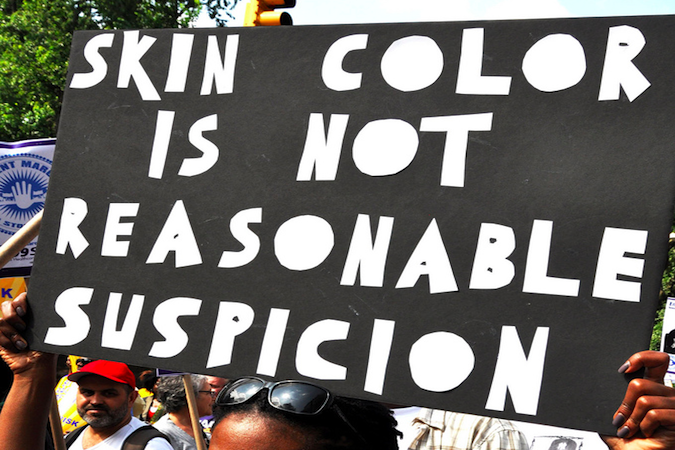Photo by Michael Fleshman/Flickr
This is the first in a 3-part series on implicit bias and CRT.
val·i·date ˈvaləˌdāt/ (verb)
- To demonstrate or support the truth (of something)
Synonyms: corroborate, back up, bear out, authenticate
In culturally responsive teaching, validation is not so much a strategy as it is a foundational stance we take. It simply means we believe diverse students when they tell us that they are being rudely insulted, ignored, or profiled by adults because of their race, language, or gender either inside or outside of school.
The Department of Justice’s recent report on the Ferguson police department is a prime example of validation of the socio-political in action. It’s an organization with authority corroborating Black people’s stories of micro-aggression and harassment. The DOJ has basically said, “No, you are not imagining things” despite White officials in Ferguson denying any pattern of practice. Instead they’d routinely place the blame on Black residents’ lack of responsibility. Up to this point it has been residents’ word against Ferguson city officials and the police department.
After the Michael Brown shooting, African Americans in Ferguson came forward and told stories of being profiled, harassed, and disproportionately fined for jaywalking and other minor offenses that were designed to get them caught up in the criminal justice system. To those on the outside looking in, it sounded like people were making a mountain out of a molehill. Jaywalking tickets. That doesn’t sound very racist. But when the Justice Department came in and gave us an aerial view of all the small, seemingly benign practices what emerged was an elaborate picture of implicit bias that had become routine and explicit.
Lack of Validation leads to Mistrust
Culturally and linguistically diverse students become aware of the subtle negative race-based actions inside and outside of school at an early age. And it makes them mad. They disengage and become mistrustful of adults who are supposed to be helping. I can remember the first time I became conscious of being followed around a store when I was in the 5th grade. I hadn’t really noticed before because like most kids I was oblivious to stuff around me. But that day, in a Walgreens drug store, I realized that as I moved from isle to isle, I had a shadow.
I remember telling my friends who were white that one of the clerks was following me around the store. They weren’t being followed. They dismissed it and told me I was trippin’. I dropped it and we carried on. I mentioned it to my mom when she got home. She didn’t look surprised. Instead, she simply repeated instructions she’d given me many times before: keep my hands visible in the store and be sure to get your receipt every time. Every time she emphasized.
We don’t need a DOJ report to tell us we live in a racialized world. Our students should not have to try and convince us of that either. Too often teachers with a colorblind stance want to discount these experiences and chalk it up to something else. Maybe the student misread the situation. Maybe it was an isolated incident. Maybe it was a conflict between two people and not really part of any bigger racialized conspiracy. People of color know better. That’s implicit bias in action. It looks invisible to folks who have skin color privilege. Validation is about acknowledging the invisible.
Let Them Know You Know
Understanding, recognizing and acknowledging the socio-political context is just as important in culturally responsive teaching as understanding how culture programs the brain. We have to let students know that we know how it is out there; that we live in a society where some get unearned privileges while others get unearned disadvantages.
If you don’t, they lose faith in you as a warm demander. Some will engage in an “I won’t learn from you” stance, or what education activist, Herb Kohl calls, not-learning. You have to validate their life experience before you can demand rigorous learning.
So, what does that look like in practice? You don’t have to become a radical and talk about how “The Man” is keeping us down. You don’t have to be political or talk explicitly about racism to validate. Instead, show you are viewing content through a critical lens by answering the following questions for yourself when you design and develop a lesson. Integrate those answers into your opening statements when you introduce a unit, topic, book, and scientific theory.
- Whose perspectives are being presented in the story? How does it fit into the dominant culture’s narrative? How does it maintain current social structures or break them down?
- Whose version of history are we reading? Are there other versions? What is the counter narrative around this historical event?
- How has this concept or scientific theory been present in the practices of indigenous people before mainstream science “discovered” it?
Before they engage, students of color are listening to hear if we understand the context of their lives. Validation is the way we let them we know that we do.
How do you validate the socio-political context in your unit design?


